‘The First Omen’ Director Arkasha Stevenson Says Classic Horror Franchise Has Plenty of Stories Left
- Oops!Something went wrong.Please try again later.
- Oops!Something went wrong.Please try again later.
- Oops!Something went wrong.Please try again later.
- Oops!Something went wrong.Please try again later.
- Oops!Something went wrong.Please try again later.
- Oops!Something went wrong.Please try again later.
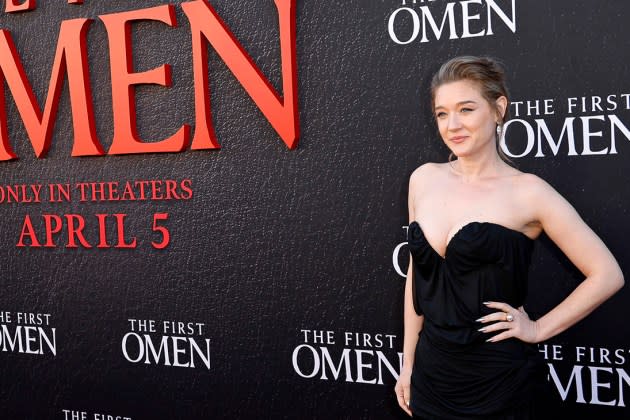
In her feature directorial debut, The First Omen filmmaker Arkasha Stevenson has pulled off the delicate balance between homage and invention. Prequels are always tricky in this regard, but it’s especially difficult when it involves Richard Donner’s horror classic, The Omen (1976). Stevenson’s assignment, in conjunction with her co-writer and producer Tim Smith, was to tell the origin story of how Damien Thorn came into the world and who gave birth to the franchise’s indelible Antichrist character.
Set in 1971, Stevenson’s story begins with the arrival of novitiate Margaret Daino (Nell Tiger Free) at a Rome-based orphanage, and she soon discovers a sinister plot to birth the Antichrist in order for the Catholic Church to regain its grip on the counterculture society of the ’60s and ’70s. But, before she’s knee deep in the conspiracy, Margaret witnesses a pregnant mother giving birth to something that causes her to pass out in horror, and the explicit scene landed Stevenson’s film an NC-17 rating for 18 months. In the end, the film was still able to show a considerable amount of the terrifying scene, as a side angle of the female anatomy led to a compromise with the MPA’s ratings board.
More from The Hollywood Reporter
'The First Omen' Star Nell Tiger Free on Her Showstopping Scene That Made Crew Walk Off Set
Events of the Week: 'Godzilla x Kong: The New Empire,' 'The First Omen' and More
'The Omen' Prequel 'First Omen' Shares First Look, Sets Release Date
“For [the ratings board], it was not what was happening to the body; it was the actual body itself that they found graphic and gratuitous, which is really upsetting,” Stevenson tells The Hollywood Reporter. “It’s 2024. You’d expect that we’d be past this, but that just made it all the more important to get what we could on screen.”
As Margaret’s own personal demons begin to resurface during her investigation, she eventually has a showstopping in the vein of Isabelle Adjani’s iconic subway scene in Possession (1981). Free recently told THR that the scene disturbed The First Omen’s crew members to the point where a couple of them even had to walk off set.
“Of course, it’s a shameless homage [to Adjani’s scene in Possession] … It’s such a sacred scene and we felt so emotionally compelled to pay homage to … the queen scene of female body horror. You don’t top that,” Stevenson says. “So [Nell] just knocked it out of the park … I don’t know if our crew fully knew what kind of movie we were shooting, but they definitely knew after Nell did that shot.”
Below, during a recent conversation with THR, Stevenson also discusses how Billie Whitelaw’s beloved Omen villain, Mrs. Baylock, fits into The First Omen’s equation. Then she expresses her interest in telling more stories in the Omen universe.
Early on in the movie, I pointed at the screen like a Leo DiCaprio meme, because Carlita’s (Nicole Sorace) drawing was the same drawing that journalists such as myself were mailed in an unmarked envelope. But, at the time, I didn’t know what it was, and because I’ve seen too many movies, I made a point to not open the envelope with my bare hands.
(Laughs.) Beautiful.
So even though you had nothing to do with it, thank you for the pre-movie scare.
Totally! I love that you were so thoughtful and cautious. I would’ve just ripped it open and thought, “Oh, somebody has a crush on me.”
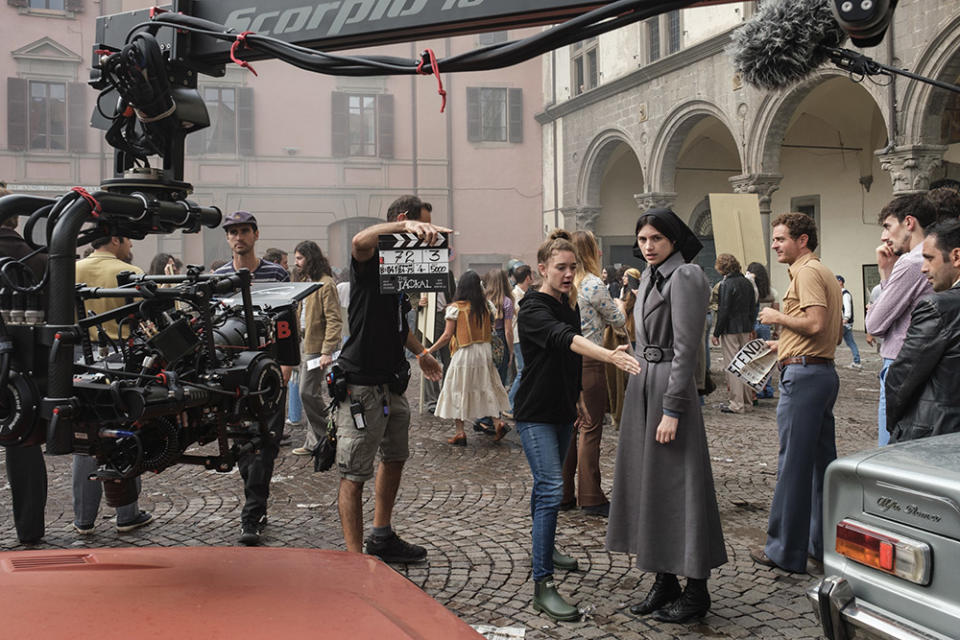
I believe you signed on when there was already a version of the script, but once you began rewriting, was Richard Donner’s cemetery scene your jumping-off point for this prequel? It seems like a lot of this movie was born out of that scene.
Maybe it was in the earlier drafts that I inherited. When I came onto the project, the script was in such a unique and interesting place. It was trying to answer those questions of, “How did Damien come into the world? And who is his mother?” So the moment that I really focused on in the original film that helped me build my perspective on this film was the moment when Gregory Peck [as Robert Thorn] is holding Lee Remick [as Katherine Thorn] in bed, and she’s telling him, “Hey, I think you need to call me a doctor. I think I’m losing my mind.” It’s this one shot that starts wide and slowly creeps in on them, and this moment made me think, “Oh, this is real horror where you don’t know if you can trust your reality or not.” So that’s one of the beautiful things about the original film. It’s so grounded in realism and these real-life relationships and characters that you’re almost unsure if the supernatural elements exist or not.
I love well-done prequels because they recontextualize the movies we’ve already seen. Was there a specific scene in the original that you hoped to add a new dimension to via your prequel?
Honestly, the hanging homage. The hanging scene [in The Omen] is burned in horror fans’ brains. It’s such a seminal scene, and it felt very intuitive to pay homage to that scene. And, just as an Omen fan, I really wanted to pay homage to that scene, but in a slightly different way by approaching it with a different tone. You can’t do the same tone that they did, and it’s scary because the violence comes out of nowhere. So what we realized is that the second you start to see somebody go up somewhere high [in an Omen movie], you know that they’re about to hang themselves and it’s not really scary anymore. The audience is already going to anticipate what’s going to happen, so we wanted to couch the horror in the tragedy of this situation.
When we were working with the actress Ishtar [Currie Wilson], whose Sister Anjelica character hangs herself, she was saying, “I don’t know if this character fully wants to do this. I don’t know if she wants to kill herself. She feels very compelled to, but she’s terrified.” And she was already this very childish character, so to see how frightened she was felt like a really interesting way to pay homage to that scene that everybody knows so well already.
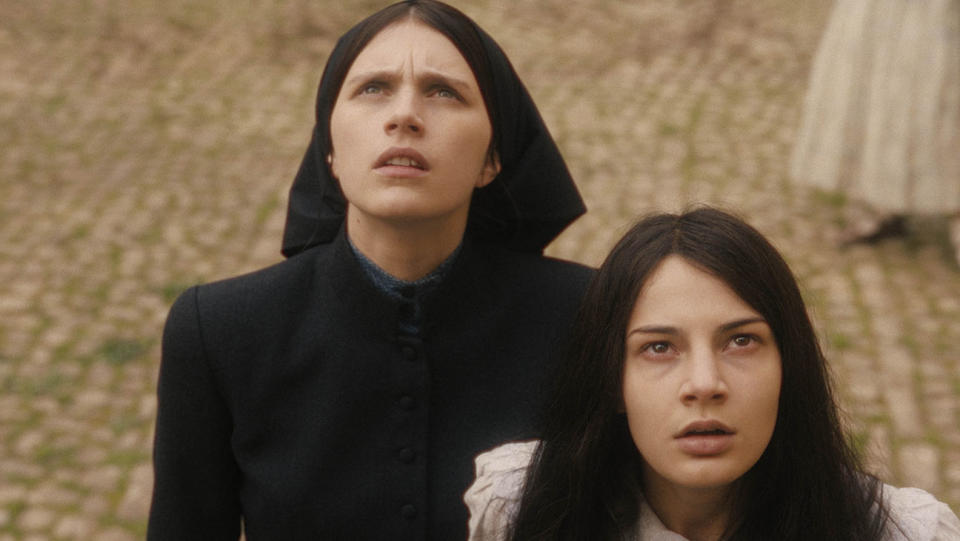
Sister Anjelica uses the famous line, “It’s all for you,” in a very clever way. Knowing that you’d be expected to include it, did it take quite a while to come up with something that didn’t feel obligatory?
Yes, one of the rules we tried to give ourselves was to not mimic just for the sake of homage, but to keep everything grounded in story and character. And in the emotional state that Sister Anjelica was in, there was no conviction behind that line. It’s almost a question for herself — a terrified question. So that’s why it’s very different from the original. She almost whispers it to herself. She doesn’t want to hear it out loud, versus, in the original, it’s a joyous declaration that feels almost manic.
The early birthing scene that causes Margaret (Nell Tiger Free) to pass out from afar resulted in an NC-17 rating for a year and a half, and I’m honestly shocked that you were still able to get away with everything in the R-rated theatrical cut. The side angle really made all the difference to the MPA’s ratings board?
It’s crazy. We have so much gore and violence in this movie. There’s also a jackal phallus. So there’s all this imagery, but it was really just this frontal shot of a vagina that got us flagged for so long. For us, the horror is not that we’re showing that piece of the anatomy, but what is happening to the female body. In our compromise with the ratings board, they eventually gave us the R rating once we cut deeper into the shot. It used to just be the full-frontal vagina and then you see this hand slowly emerge. So their compromise was that we could cut to that [side] shot once you start to see the hand emerge. For them, it was not what was happening to the body; it was the actual body itself that they found graphic and gratuitous, which is really upsetting. It’s 2024. You’d expect that we’d be past this, but that just made it all the more important to get what we could on screen.
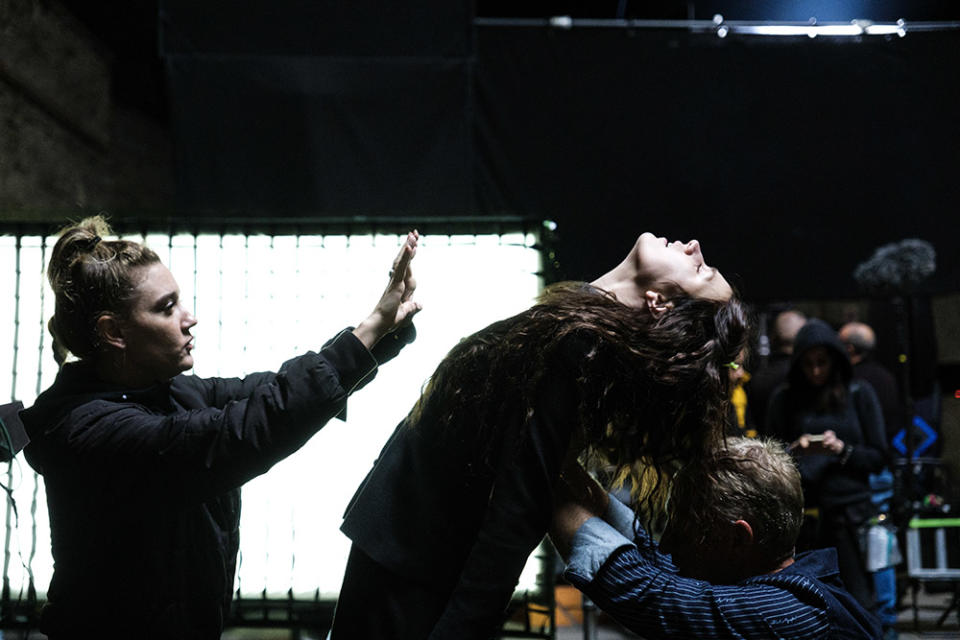
It’s widely presumed, but is Isabelle Adjani’s famous subway scene in Possession a direct inspiration on Nell’s own spasmodic episode outside the car?
Of course, it’s a shameless homage, and I almost felt like Sister Anjelica on the balcony, because it’s such a sacred scene and we felt so emotionally compelled to pay homage to it. It’s the queen scene of female body horror. You don’t top that. And personally, it spoke to me in a way that I could never articulate what I was feeling. So Nell and I were like, “This is the perfect climax to this long voyage through intense body horror. This character is finally exploding.” And what Nell did that was so amazing is that she took it to an exceptionally feral and fierce place, which is such a wonderful contrast to the very sweet, kind, young woman that we meet at the beginning of the film. Sweet and kind doesn’t mix in people’s heads with fierce and ferocious and powerful, and just that juxtaposition is very confronting for people. So she just knocked it out of the park, and she only did two takes. I said, “Do you want to talk about it? Do you want to play music?” And she was like, “No, I just want to do it.” And man, she did it. I don’t know if our crew fully knew what kind of movie we were shooting, but they definitely knew after Nell did that shot.
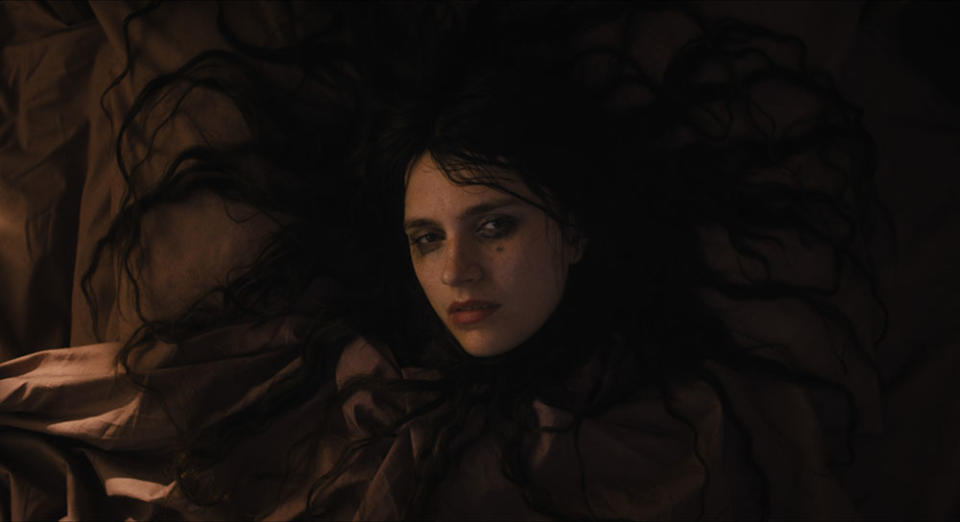
Whenever Margeret is lying down, you arrange her hair in a creepily specific way. Was that meant to further the spider motif?
Yes, there’s a lot of different thoughts in that, and thank you so much for noticing. I got very obsessed with spiders during this film. Spiders are kind of like these hands, and everybody is always touching Margaret. So we wanted these little hands always on Margaret’s brain or her face. And then, eventually, as her psyche starts to shatter, it’s like every errant strain is one of these little spider legs.
Also, in thinking about different ways to photograph this kind of body horror, my mom shared a lot of paintings of John [William] Waterhouse, and I saw these women drowning with their hair flowing all around them. So, to make Margaret’s hair look like she’s drowning was something that I really wanted to try in these very vulnerable, frightening moments.
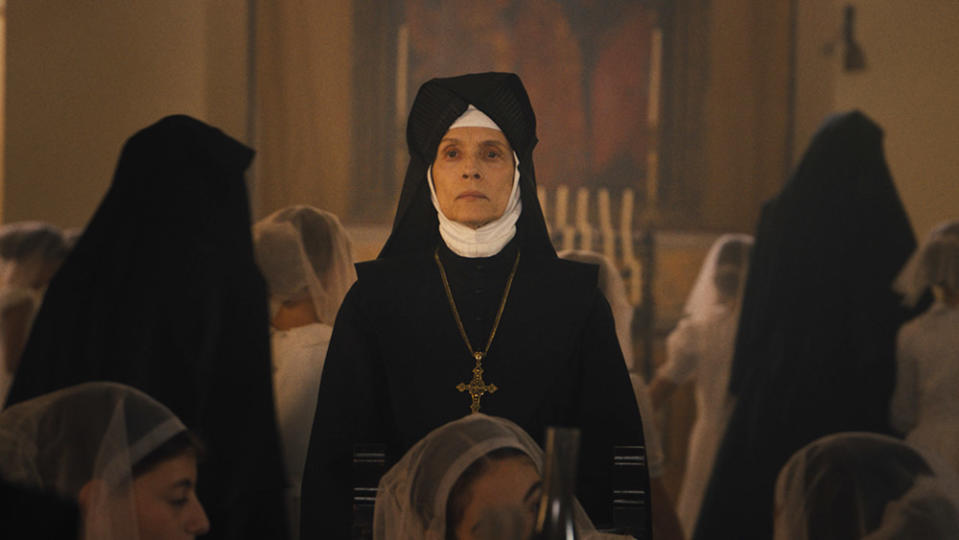
I think The Omen’s Mrs. Baylock (Billie Whitelaw) is one of the most memorable villains ever put on screen. I suppose we can assume that she has ties to this orphanage, but how far did those conversations go on whether to use her or not?
I love that character, and I don’t know if you can recreate that character. There are other faces that we also wanted to bring back [or did bring back], like Father Spiletto. Of course, everybody needs Gregory Peck in their life, and that was very important to be able to see his face in some way on screen. But I do love the spirit of Baylock being with us in Sonia Braga and all these other nuns that are at the orphanage, and wondering what the lineage is there.
I did note the resemblance there.
Yeah. (Laughs.)
The ending sets up another story if this one does well, commercially. Is that a tale you’d be interested in telling if the stars align?
Of course. It was so nice getting to work on this project because I fell in love not only with our cast, but also with these characters. And while the big question of how Damien came into the world was answered, so many other questions popped up for me as an Omen fan. So being able to explore this universe [some more], there’s just so many different avenues you could take.
Just out of curiosity, was the coda shot during principal or additional photography?
That was shot during principal photography. It was really important for us to not only show [which characters] survived everything, but also that they were really thriving together and recouping over this shared trauma. So that was always part of the plan.
***
The First Omen opens in theaters on April 5.
Best of The Hollywood Reporter

